Share
Explore
How Are Builders Getting Smart With GI Angles?
In the ever-evolving world of construction and engineering, the need for stronger, more reliable, and cost-effective materials is greater than ever. One such material that continues to gain popularity among builders is GI angles. As innovation and efficiency become central themes in modern building practices, understanding how GI angles are being used smartly across projects can offer valuable insights for professionals and companies alike.
In this article, we will explore what GI angles are, their role in contemporary construction, and how builders are using them in smarter, more efficient ways to achieve better outcomes.
Understanding GI Angles and Their Importance
GI angles, or Galvanized Iron angles, are structural steel elements coated with a protective layer of zinc to prevent rusting and corrosion. They are typically shaped into an "L" profile and come in various thicknesses and sizes to suit different structural needs.
The importance of GI angles lies in their durability, resistance to weather conditions, and versatility. Builders prefer GI angles because they provide excellent structural support while being relatively lightweight and easy to handle. These qualities make them essential in numerous construction applications, from residential frameworks to large-scale industrial structures.
Smart Material Selection for Durability and Strength
Modern builders are getting smarter about the materials they select for long-term durability, and GI angles are at the forefront of these choices. Thanks to their galvanized coating, GI angles are more resistant to corrosion than many untreated alternatives. This added layer of protection means that structures made with GI angles require less maintenance over time, translating into significant cost savings.
Builders now carefully assess environmental factors such as humidity, exposure to chemicals, and the load-bearing requirements of a project before choosing GI angles. This strategic material selection ensures that GI angles not only fit the structural needs but also enhance the longevity of the construction.
NOTE: High-qualitywere supplied to meet diverse construction needs. Builders and contractors trusted their durability and strength across projects. For superior GI Angles, SYDNEY METAL TRADING LLC had been the preferred choice. Contact SYDNEY METAL TRADING LLC today to ensure your project is built with the best materials.
Innovative Structural Applications of GI Angles
In today’s construction practices, GI angles are no longer limited to basic support structures. Builders are using them in increasingly innovative ways to optimize design and functionality.
Reinforcing Foundations and Frames
One smart application of GI angles is in the reinforcement of foundations and frames. By integrating GI angles into the skeletal framework of a building, builders enhance the overall strength and stability of the structure. This approach is especially useful in earthquake-prone or high-wind areas where additional reinforcement can prevent structural failure.
Customized Trusses and Roof Structures
GI angles are now commonly used to create custom trusses for roofs, bridges, and other architectural elements. Thanks to the flexibility in their sizing and strength, builders can design lightweight yet strong roof structures that are easy to install and maintain.
Modular Construction Systems
As modular construction becomes more popular, GI angles are finding their place in prefabricated systems. Builders use GI angles to create modular frames that are assembled off-site and then transported to the construction location. This method reduces on-site labor, minimizes waste, and speeds up the overall construction process.
Enhancing Sustainability Through Smarter Choices
The use of GI angles contributes to sustainability in several ways:
By considering the environmental impact of materials, builders are making smarter decisions that align with global sustainability goals.
Technological Advances in the Manufacturing of GI Angles
Another way builders are getting smart with GI angles is by leveraging advancements in manufacturing technology. Today's GI angles are produced with improved galvanization techniques that ensure a more uniform zinc coating, offering better protection against corrosion.
Moreover, precision engineering and quality control during manufacturing mean that GI angles are more consistent in size, thickness, and strength. Builders can now rely on these materials to meet exact specifications, reducing the need for on-site adjustments and speeding up project timelines.
Cost-Effective Solutions for Large-Scale Projects
Smart builders understand that cost control is critical for project success. GI angles provide an economical solution without compromising on strength and durability. Their affordability, combined with their low maintenance requirements, makes them a preferred choice for:
In each of these applications, GI angles help builders maintain budgets without sacrificing quality or safety.
Improving Safety Standards with GI Angles
Safety is non-negotiable in construction, and builders are using GI angles to create safer structures. Because GI angles are resistant to corrosion and degradation, the risk of structural failures due to material weakness is greatly reduced.
In addition, GI angles are fire-resistant and can maintain their structural integrity at higher temperatures compared to other materials. By incorporating GI angles into critical load-bearing elements, builders enhance the overall safety of the buildings they create.

Future Trends in the Use of GI Angles
Looking ahead, the use of GI angles is expected to expand even further as new construction trends emerge. Some future directions include:
Builders who stay ahead of these trends will be better positioned to deliver projects that meet future demands for innovation, efficiency, and environmental responsibility.
Conclusion
Builders are indeed getting smarter with GI angles, using them in ways that maximize strength, minimize costs, enhance sustainability, and improve safety standards. Through careful selection, innovative applications, and an eye toward future trends, GI angles are becoming an indispensable part of modern construction strategies.
As the demand for smarter, greener, and more cost-effective building solutions grows, the role of GI angles will only continue to strengthen. For builders, engineers, and project managers looking to stay competitive in the construction industry, understanding and utilizing GI angles smartly is not just an option — it’s a necessity.
Want to print your doc?
This is not the way.
This is not the way.

Try clicking the ⋯ next to your doc name or using a keyboard shortcut (
CtrlP
) instead.